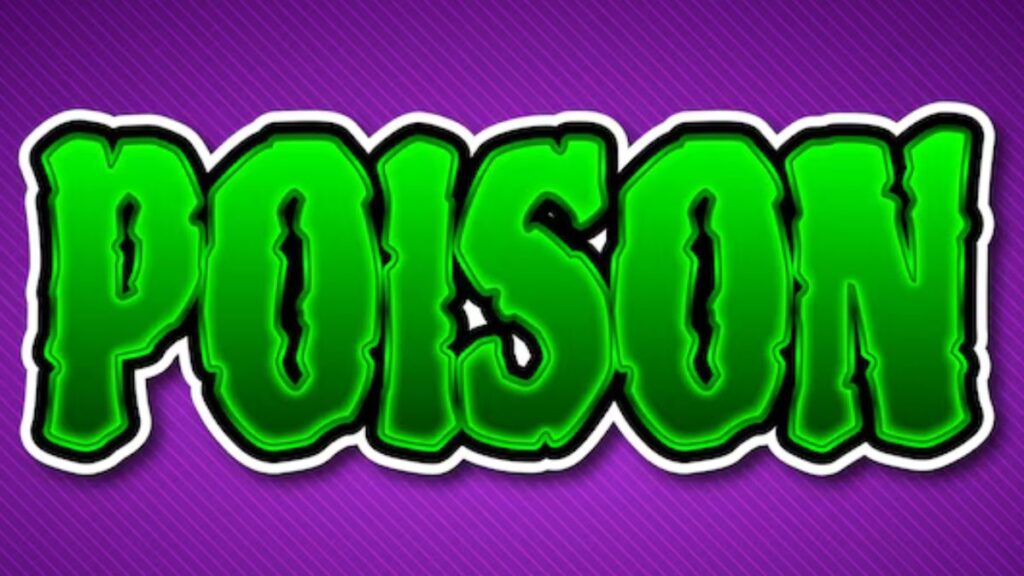With brightly colored designs and strange shaped characters, cartoons have an irresistible appeal for both children and adults. Cartoons are considered fun and safe pastimes, but they happen to be a representation of engagements in the society. One of the interesting highlights about the facts is the portrayal of Poison letters – a topic that has blurred boundaries over the years. This blog addresses the shift in the cartoons depiction of letters written on poison into objects solely intended to provoke humor and eventually become a threat, and how they resonate with audiences and the society plural.
The Evolution of Poison in Cartoons
Harm-free Gags
In the golden age of animation, humor was attached to poison. Warner Bros and Disney Studios also had their share of cartoons where poisons were used as a clownish device with comical scenes followed by characters recovering in a Letters Written on Poison in Cartoons. Some of these representations were meant to be comic whereby the target was the ridiculous as opposed to the threat.
Increasing Realism
Representations in Comics In all or in most of the today’s animated films, poisoning is not so trivialized. Whichever way this is represented it is done in such a way that it makes it look menacing and deadly. The cartoons for example “The Simpsons” or “Family Guy”, which are designed for the mature audiences have also touched on the negative side of poison in its figurative sense.
Modern Depictions
The Letter as a Plot Device As we have established so far in this treatise letters are often a driving plot element in cartoons and other media. The same letter may be an antagonist, bring a new perspective or even resolve the issue. Poison if well incorporated increases the action in the narrative radically.
The Letter as a Plot Device
Driving Narrative
Words act as important elements in cartoons, most times forming an integral part of the plot. A letter serves excellent purposes: it can stir up trouble, uncovers intrigue or pushes the action further. The effect increases even more when it is combined with poison in which case a fresh layer of suspense and tension is added to the story.
Character Development
Development of the story by the welfare of that character, unfortunately, isn’t nearly as easy since the reader makes their own assumptions about the character’s behavior. The character’s reaction towards receiving or sending a poison letter tells quite a bit about them. Do they have moral standards or defects? This helps enhance the story line further, making the audience captivated even more.
Symbolism and Themes
Besides making the storyline to progress, Letters Written on Poison in Cartoons seems to decorate the story with high raised images. Betrayal, revenge or hopelessness are powerful themes that the viewers identify with. In this way, cartoons can grow into something deeper and much more complicated than just gorgeous pictures and kids’ laughter.
The Real-Life Implications
Behavioral Influence
Out of the reasons, why one would be outraged by the presence of a depiction of poison in the cartoons, the most worrying factor would be its actual effects in real life. Research has proven that popular media can influence people’s behavior and that this is quite prevalent with the younger, more impressionable crowds. Poison as depicted in cartoons, such as that of McDonald’s, can be so normalized that it lends way to toxic behaviour.
Educational Opportunity
But, cartoons also has another side to it – an educational one. Using animations it is possible to depict the consequences of the use of poison allowing to draw attention towards the obsession with it. This not only makes the viewer more aware but also encourages a sense of caution and responsibility, meaning less trouble.
Ethical Considerations
No doubt there are moral issues associated with the use of poison in cartoons & its ethical core cannot be missed. In terms of Quality Content, the urge to create very interesting materials without embracing inciting behaviors is always a hustle for the designers. This is an effort that is quite sensitive and requires a lot of considerations especially for younger audiences.
Community Response
Public Reaction
The issue of the depiction of Poison in cartoons has not escaped the внимание of the masses, interest groups and the target audience. Through the years, several advocacy groups and communities have voiced their displeasure regarding the depiction of the responsible use of poison. Their efforts have yielded better representation and in some instances, the presentations have been changed.
Controversies and Legal Actions
There are times when the portrayal of poison in cartoons has been regarded as inflammatory and has even instigated litigation. For instance, certain episodes of popular shows have been banned from circulation over certain issues. These measures bring to the forefront the issues that are still alive looking at the influence of media on behavior and impressions.
Positive Engagement
Regardless of the controversies, a number of communities have also discovered affirmative means of interacting with the topic. Awareness campaigns and conversations have sprung up wherein cartoons are used as a launching pad to discuss the risks of poison and safety awareness. This proactive approach shows how the media can spark off fruitful and lasting discussions and actions for change.
Conclusion
The use of cartoon letters placed on poisonous substances provides insights into the changes that are occurring in the field of animation as well as the influence of animation on the society. These interpretations have ranged from funny to fearsome and have generated concern over the impact of the media, the morality involved, and the reactions of the people. Also in the future, as we watch and analyze cartoons, it is important to consider how they influence us since our behavior, perception, understanding, and even creativity are most of the time present. Thus, it can be preserved, and let this entertaining part of the mass media serve as it is intended but in a more educated manner.
Frequently Asked Questions
Q1. How have depictions of poison in cartoons evolved over time?
Initially, the concept of using poison in animation was limited to comical uses, with immoderate and benign effects. However, as history would have it, such animations developed, and the use of poison was unavoidable. The majority of aired cartoons these days contain poison as a vicious character and even seek to bring it out as something harmful. Such a trend embraces that of both film and broader issues of development of society in general as more sophisticated and complex issues are covered in animation aimed at adults.
Q2. What role do letters play in cartoons, and why are they significant?
Letters in cartoons are important devices that can create problems, uncover mysteries, and move the plot ahead. Letters Written on Poison in Cartoons, the combination brings in some form of intensity. And urgency which raises the level of the story. They also present scopes for expanding the characters, specifically such qualities as heroism, ethics, or panic. As such, it is possible to wonder how the narrative can present themes of poison letters in thanks to domestic treason, revenge, and bitterness.
Q3. Can the portrayal of poison in cartoons influence real-life behavior?
To a great extent, cartoons especially to the impressionable audiences can have an effect on real life behavior. Glorifying or normalizing the use of poison in cartoons may most times result in irresponsible behavior. Cartoons, however, also possess the ability of teaching people to be aware of poisonous substances and be responsible. Then the issue comes to how to make it interesting as well as responsible, which seems to be critically needed.
Q4. How has the community responded to the depiction of poison in cartoons?
There have been many community responses towards such matters, including concerns and critiques and also positive responses. Watchdog organizations and community groups have expressed concern about the impacts of such portrayals. Leading to more focus on content, projects and in some cases changes. There are mainstream shows that have had to pull specific episodes for content problems. On the positive side, there have been positive educational activities, awareness and dialogue campaigns. Where cartoons are used to create awareness about poison and related hazards.
Q5. What are the ethical considerations for animators when depicting poison in cartoons?
Animators encounter a considerable challenge in storytelling due to their ethical responsibilities. They also have to take into consideration how the use of certain images may affect the viewers, especially children. This means that harmful practices cannot be promoted even if it is in the name of making good stories. Animators have to try to satisfy these ethical concerns so that the media system’s. Overall functioning is more effective and positive.



